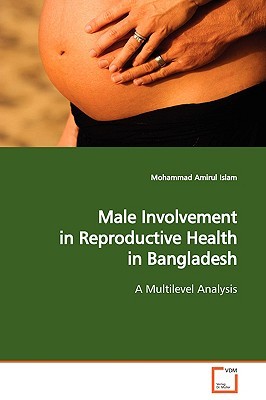
- We will send in 10–14 business days.
- Author: Mohammad Amirul Islam
- Publisher: VDM Verlag
- ISBN-10: 3639102258
- ISBN-13: 9783639102253
- Format: 15.2 x 22.9 x 1 cm, softcover
- Language: English
- SAVE -10% with code: EXTRA
Male Involvement in Reproductive Health in Bangladesh a Multilevel Analysis (e-book) (used book) | bookbook.eu
Reviews
Description
A growing consensus has emerged among policy planners to involve males in the reproductive health (RH) programmes. One reason for this is men's dominating role in the family decision process. This is globally acknowledged, after the International Conference on Population and Development (ICPD) held in Cairo, 1994. This book evaluated the status of male involvement in RH in the world context and in the Bangladeshi context. In-depth analyses of male involvement in family planning (FP), one of the key components of RH, have been done using Bangladesh Demographic and Health Survey (DHS) couple dataset. A conceptual frame work showing the relationship among different components of men's involvement in FP has been proposed. Consistency in reporting of contraception by both the spouses has been addressed. Multilevel models have been fitted considering the hierarchical nature of DHS data. This book raised some limitations of DHS variables and suggested appropriate modeling strategies.
EXTRA 10 % discount with code: EXTRA
The promotion ends in 19d.13:45:09
The discount code is valid when purchasing from 10 €. Discounts do not stack.
- Author: Mohammad Amirul Islam
- Publisher: VDM Verlag
- ISBN-10: 3639102258
- ISBN-13: 9783639102253
- Format: 15.2 x 22.9 x 1 cm, softcover
- Language: English English
A growing consensus has emerged among policy planners to involve males in the reproductive health (RH) programmes. One reason for this is men's dominating role in the family decision process. This is globally acknowledged, after the International Conference on Population and Development (ICPD) held in Cairo, 1994. This book evaluated the status of male involvement in RH in the world context and in the Bangladeshi context. In-depth analyses of male involvement in family planning (FP), one of the key components of RH, have been done using Bangladesh Demographic and Health Survey (DHS) couple dataset. A conceptual frame work showing the relationship among different components of men's involvement in FP has been proposed. Consistency in reporting of contraception by both the spouses has been addressed. Multilevel models have been fitted considering the hierarchical nature of DHS data. This book raised some limitations of DHS variables and suggested appropriate modeling strategies.


Reviews